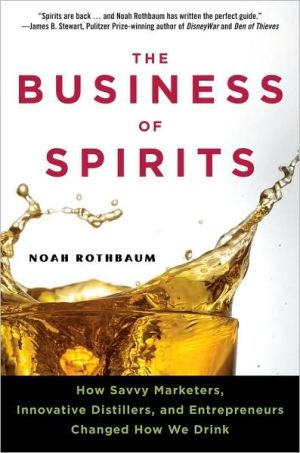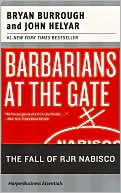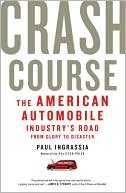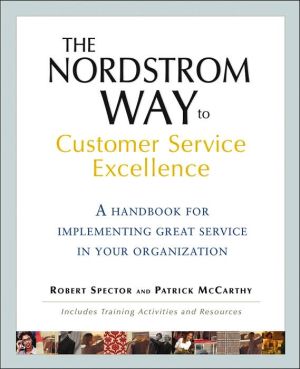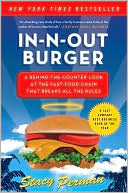The Business of Spirits: How Savvy Marketers, Innovative Distillers, and Entrepreneurs Changed How We Drink
Walk into a liquor store today and you’ll be faced with an unprecedented variety of vodka, gin, whisky, cognac, rum and even tequila. In the past decade, the amount of spirits sold in bars, stores and restaurants has climbed nearly sixty percent. Celebrating the acumen of the businessmen and craftsmen responsible for this phenomenal sales growth, The Business of Spirits: How Savvy Marketers, Innovative Distillers, and Entrepreneurs Changed How We Drink, is a cocktail of history and insight...
Search in google:
Walk into a liquor store today and you’ll be faced with an unprecedented variety of vodka, gin, whisky, cognac, rum and even tequila. In the past decade, the amount of spirits sold in bars, stores and restaurants has climbed nearly sixty percent. Celebrating the acumen of the businessmen and craftsmen responsible for this phenomenal sales growth, The Business of Spirits: How Savvy Marketers, Innovative Distillers, and Entrepreneurs Changed How We Drink, is a cocktail of history and insight into a rapidly growing industry. Journalist Noah Rothbaum takes readers from the cellars of Cognac, France, to the Scottish Highlands to the agave fields of Mexico to find out what’s now driving this age old industry. The book explores new production techniques, cutting-edge marketing campaigns and introduces a new crop of crafty entrepreneurs. Publishers Weekly In this slim book, journalist Rothbaum explains how the liquor business has engineered a new golden age. As with so many industries, conglomerates have soaked up the small distilleries, improving global distribution, while increasing connoisseurship spurred partly by pop culture vehicles like Sex and the Cityhas turned on consumers to super-premium vodkas and rum distilled from hand-harvested sugarcane. Among those he profiles is impresario Sidney Frank, who transformed Jagermeister from an obscure herbal elixir to frat-boy staple, and opened his Grey Goose vodka distillery not in Russia, Poland or Scandinavia but in France's Cognac region, gaining easy access to excellent water, local distilling expertise and a unique and luxurious-sounding provenance. He eventually sold the brand to Bacardi for more than $2 billion, but not before me-too brands popped up to lure imbibers, with ever more complex backstories and filtration processes, not to mention flashier bottles for the tasteless spirit. Rothbaum devotes a chapter to applauding the revival of the pre-prohibition craft of quality cocktails, a trend distillers celebrate as well. The text is sprinkled with informative sidebars-perhaps too many, given its slender size-like a guide to artisan cocktail bars in New York, London and Prague, and a thumbnail history of rye whiskey. An industry cheerleader, Rothbaum tells his story well, but it could have benefited from more social context regarding the roots of today's hard alcohol renaissance. (Sept. 4)Copyright 2007 Reed Business Information
\ Publishers WeeklyIn this slim book, journalist Rothbaum explains how the liquor business has engineered a new golden age. As with so many industries, conglomerates have soaked up the small distilleries, improving global distribution, while increasing connoisseurship spurred partly by pop culture vehicles like Sex and the Cityhas turned on consumers to super-premium vodkas and rum distilled from hand-harvested sugarcane. Among those he profiles is impresario Sidney Frank, who transformed Jagermeister from an obscure herbal elixir to frat-boy staple, and opened his Grey Goose vodka distillery not in Russia, Poland or Scandinavia but in France's Cognac region, gaining easy access to excellent water, local distilling expertise and a unique and luxurious-sounding provenance. He eventually sold the brand to Bacardi for more than $2 billion, but not before me-too brands popped up to lure imbibers, with ever more complex backstories and filtration processes, not to mention flashier bottles for the tasteless spirit. Rothbaum devotes a chapter to applauding the revival of the pre-prohibition craft of quality cocktails, a trend distillers celebrate as well. The text is sprinkled with informative sidebars-perhaps too many, given its slender size-like a guide to artisan cocktail bars in New York, London and Prague, and a thumbnail history of rye whiskey. An industry cheerleader, Rothbaum tells his story well, but it could have benefited from more social context regarding the roots of today's hard alcohol renaissance. (Sept. 4)\ Copyright 2007 Reed Business Information\ \ \ \ \ Library JournalJournalist Rothbaum's expertise in the alcoholic beverage category has been featured in trade and business media. His book briskly moves readers through relevant history from Prohibition to the present. Though the book is organized by drink categories, e.g., whiskies, vodkas, cocktails, including the latest trends, Rothbaum's common thread is the move away from the temperance movement toward more sophisticated lifestyles that demand "premium" brands. Many books address the experience of drinking particular beverages from the perspective of the consumer. This book is just as educational but provides a broader context about trends over decades and the profit motive that impacts why there are so many products on the market. For example, vodka brands are everywhere because it can be produced, marketed, and enjoyed within a year, compared to Scotch, which commonly takes 12 years before it is consumed. Other books, such as John Kobler's Ardent Spirits: The Rise and Fall of Prohibitionor The Business of Wine: Industry Insiders on the Production & Delivery of a Premium Product from Vine to Table, offer more focused glimpses into aspects of the booze business. Rothbaum connects his research to today's realities and does not assume professional production knowledge. His book is so well written and covers so many different topics that it would be a valuable addition to libraries of all kinds in their marketing category or with books on wines and spirits-or even in general history collections.\ —Stephen Turner\ \ \
